Medical records from contaminated areas speak for themselves; doctors, scientists and citizens bear witness to the devastating health impacts of radioactive fallout from nuclear accidents Dr. Mae-Wan Ho
The Chernobyl disaster occurred on 26 April 1986at the Chernobyl Nuclear Power Plant near the city of Prypiat in Ukraine, then part of the Soviet Union, and close to the administrative border with Belarus. A sudden power output surge prompted an attempt at emergency shutdown; but a more extreme spike in power output led to the rupture of a reactor vessel and a series of explosions. The graphite moderator was exposed, causing it to ignite, and the resulting fire sent a plume of highly radioactive fallout over large parts of the western Soviet Union and Europe. From 1986 to 2000, 350 400 people were evacuated and resettled from the most contaminated areas of Belarus, Russia and Ukraine. According to official post-Soviet data, about 57 % of the fallout landed in Belarus [1]. Chernobyl is widely considered to have been the worst nuclear accident in history and one of only two classified as a level 7 event on the International Nuclear Event Scale, the other being the Fukushima Daiichi nuclear meltdown in 2011 (see [2] Fukushima Nuclear Crisis, SiS 50).
From the beginning, the official nuclear safety experts were at pains to minimise the projected health impacts, as they are doing now for the Fukushima accident.
The UNSCEAR (United Nations Scientific Committee on the Effects of Atomic Radiation) estimated a “global collective dose” of radiation exposure from the accident “equivalent on average to 21 additional days of world exposure to natural background radiation”. Successive studies reported by the IAEA (International Atomic Energy Agency) continued to underestimate the level of exposure and to understate health impacts other than [3] “psychosocial effects, believed to be unrelated to radiation exposure” resulting from the lack of information immediately after the accident, “the stress and trauma of compulsory relocation to less contaminated areas, the breaking of social ties and the fear that radiation exposure could cause health damage in the future.”
The number of deaths attributed to Chernobyl varies widely [1]. Thirty-one deaths are directly attributed to the accident, all among the reactor staff and emergency workers. An UNSCEAR report places the total confirmed deaths from radiation at 64 as of 2008. The Chernobyl Forum [4] founded in February 2003 at the IAEA Headquarters in Vienna with representatives from IAEA and UN agencies including UNSCEAR, WHO, the World Bank, and Belarus, Russia and Ukraine, estimates that the eventual death toll could reach 4 000 among those exposed to the highest levels of radiation (200 000 emergency workers, 115 000 evacuees and 270 000 residents of the most contaminated areas); the figure includes some 50 emergency workers who died of acute radiation syndrome, 9 children who died of thyroid cancer and an estimated total of 3950 deaths from radiation-induced cancer and leukemia. The Union of Concerned Scientists based in Washington in the United States estimates another 50 000 excess cancer cases among people living in areas outside the most contaminated, and 25 000 excess deaths. A Greenpeace report puts the figure at 200 000 or more. The Russian publication, Chernobyl, by scientists Alexey V. Yablokov, Vassily B Nesterenko, and Alexey V. Nesterenko, translated and published by the New York Academy of Sciences in 2009, concludes that among the billions of people worldwide who were exposed to radioactive contamination from the disaster, nearly a million deaths had already occurred between 1986 and 2004. Most of the deaths were in Russia, Belarus and Ukraine [5] (see Truth about Chernobyl, SiS 47). The report drew on thousands of published papers and internet and printed publications. Those publications and papers, written by leading Eastern authorities, were downplayed or ignored by the IAEA and UNSCEAR. These agencies minimised their estimates by several ploys including [6]:
Nevertheless, the devastating health impacts did not escape the notice of the hundreds of doctors, scientists and other citizens who had to bear witness to the deformities, sicknesses and deaths of exposed babies, children and adults in their care.
Alexei Yablokov, distinguished academician of the Russian Academy of Sciences in Moscow, spoke at the Scientific and Citizen Forum on Radioprotection – From Chernobyl to Fukushima, 11-13 May 2012 in Geneva [7]. He is adamant that the consequences of the Chernobyl disaster can be clearly demonstrated by comparing the states of people’s health in areas receiving different amounts of additional radiation following the accident, instead of one based on average effective dose calculated by the ICRP and UNSCEAR which underestimates the true levels of irradiation. For example, there is a clear difference in mortality rates between highly contaminated provinces and less contaminated provinces of Russia (see Figure 1). Yablokov is lead author of a massive report, now in its third enlarged 2011 edition [8], which has collated all the available evidence.
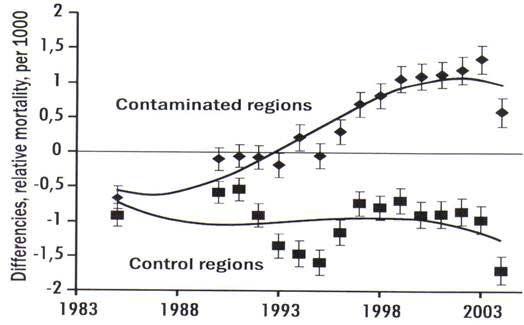
Figure 1 Relative death rates in 6 highly contaminated provinces compared with 6 less contaminated provinces in Russia; zero represents no difference from Russia as a whole
The evidence that emerged is also striking for the diversity of deformities and illnesses observed apart from cancers; and this is documented in more than 10 000 studies published in different countries, mainly Russia, Ukraine and Belarus, in the 25 years since the disaster. Contrary to the figures given out by UNSCEAR, IAEA and the World Health Organization (WHO), even reports published by the governments of Belarus and Ukraine recognise that there has been significant increase in levels of illness and deaths everywhere: various forms of cancer (not only of the thyroid), cataracts, cardiovascular diseases, diseases of the respiratory and digestive systems, immunological and neuropsychiatric effects, birth defects, and alterations in reproductive function, and premature aging. Death rate among the liquidators (recovery workers) remained high even four years after the disaster, despite the fact that most of them were young and in good health. Twenty years later, 115 000 (out of 830 000) are dead.
Yablokov emphasized that the fallout from Chernobyl is global, as 57 % of the radioactive material fell outside the former Soviet Union. Consequently, many countries in the Northern hemisphere particularly Europe and Western Asia would also be affected. A significant increase in birth defects was observed in many European countries and in Turkey. Particularly telling are the higher infant mortality rates above a long-term decreasing trend recorded simultaneously in four different European countries between 1986 and 1992 (see Figure 2).
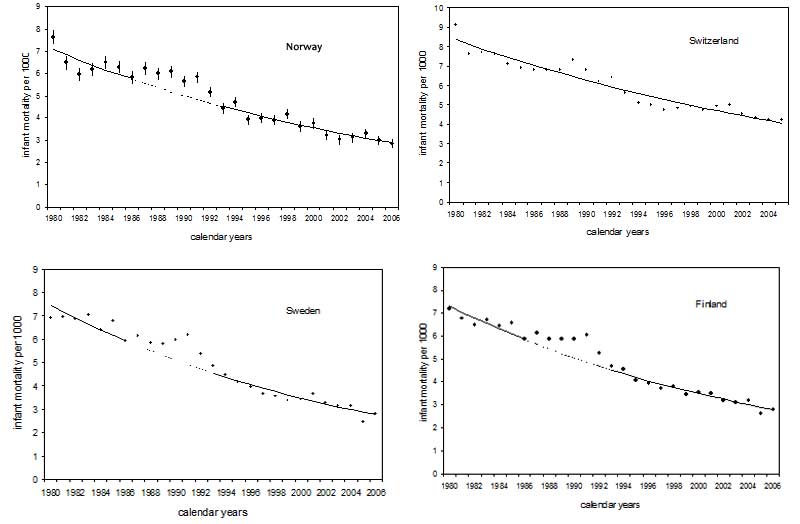
Figure 2 Infant mortality in four different European countries
Another impact of fallout from Chernobyl is the increase in cancer, death rates and marked deterioration in educational achievement in schoolchildren in the most contaminated areas of Sweden compared with less contaminated areas. Even after 26 years, there are places in Norway, Germany, Switzerland, France and other European countries where deer, boar, fish and mushrooms are still contaminated by caesium 137 at dangerous levels [8].
The health legacy from Chernobyl is long lasting. The genetic damage in terms of chromosomal breaks and other mutations will affect the health of millions over several generations yet to come. “The full picture of deteriorating health in the contaminated territories is far from complete,” Yablohov said. More research is needed; instead, research on the health impacts of Chernobyl has been cut back in Russia, Ukarine, and Belarus.
Evidence of the devastating health impacts from the radioactive fallout of Chernobyl is still to be found long after the accident. Seventeen years later, areas contaminated at levels above 40 kBq/m2 in Belarus, Ukraine and Russia, have seen an increase in total average mortality of 3.8 to 4 % (an excess of 237 000 people) compared with neighbouring regions that were less contaminated [9]. (A Bq, becquerel, is a radioactive disintegration rate of one per second.) A conservative extrapolation from these figures led to the conclusion that over the 20 years following the accident, Chernobyl has caused an additional million deaths (about 0.1 of total mortality).
Some general effects of the Chernobyl accident that began to appear in the 3rd to 4th year and have continued over the following 10 to 15 years; these are as follows.
Specific health problems linked to radiation from Chernobyl affect practically all organ systems.
Other health impacts include the following.
One specific effect of the radioactive contamination from Chernobyl is the change in the secondary sex ratio (ratio of male/female births). After 1987, there was a statistically significant decrease in the number of girls born in some European countries [10]. In 2008, there was a deficit of female births worldwide of around a million [11].
Yablokov (and other speakers at the conference) blamed the lack of clear understanding of the negative impact of the Chernobyl disaster first of all on the secrecy and falsification of the USSR medical statistics for the first three and a half years after the catastrophe, on the difficulties in estimating absorbed doses by individuals, the inability to determine the impact of each of the radionuclides (fission products are notoriously heterogeneous) [7], and most of all, the agreement signed between the WHO and the IAEA in 1959, whereby the WHO needs the consent of the IAEA to publish the results of studies on ionising radiation [12]. That has resulted in crucial data being concealed.
Thyroid cancer is practically the only health impact admitted by the UNSCEAR assessment to be linked to Chernobyl [13]. It recognized more than 6 000 cases of thyroid cancer reported in children and adolescents up to 2005 who were exposed at the time of the accident, and “more cases to be expected during the next decades.” In fact, 8 700 additional thyroid cancer cases occurred in Belarus alone between 1990 and 2006, according to M.V. Malko of the Belarus National Academy of Sciences [14]. The number of thyroid cancer cases registered during this period was about 13 300 as against 4 600 expected. The situation has got worse, as populations are living in areas still highly contaminated. Since 2005, malignant tumours of the thyroid in both adults and children had jumped again, from 10.8 per 100 000 inhabitants to more than 11.8 or more in 2008 and 2009.
Galina Bandajevsky, a paediatrician in Belarus, is witnessing the continuing impact on the children in her country. Since 2000, the number of children under 18 in Belarus has decreased by 27.4 % (see Figure 3), despite the fact that birth rate has been increasing since 2003, from 9 per 1 000 to 11.4 per 1 000 in 2010.
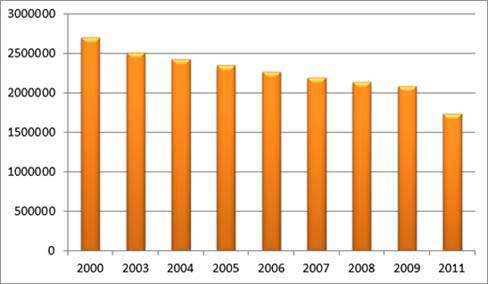
Figure 3 Population trend in children of Belarus
“To-day, paediatricians like myself are seeing, in the course of our clinical examinations, an increase in the number of illnesses and a general deterioration in children’s health in Belarus.” Bandajevsky said. According to the data, out of a total of more than 1 million school children in Belarus in 2009, only 26.7 % were considered in good health, 58.1 % had functional deficiencies and were at risk of developing chronic illnesses, while 13.8 % already suffered from chronic illness.
In 2010, a high incidence or primary diseases of the endocrine system, the blood and circulatory system and tumours were seen especially in the Gomel and Moguilev regions, which are the most highly contaminated (see Figure 4)
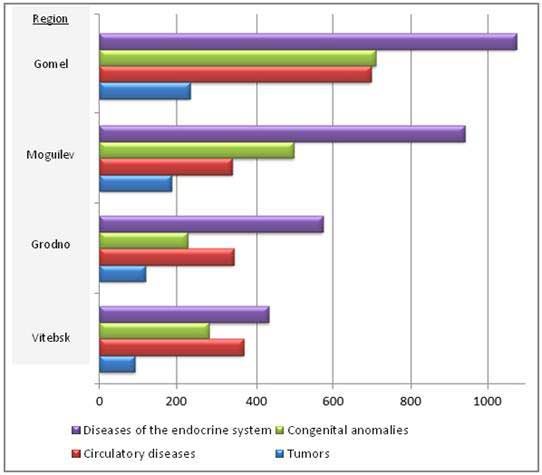
Figure 4 Primary diseases in children of Belarus by regions
Bandajevsky’s speciality is cardiovascular disease. The diagnosis of heart problems in children is very straight forward. Every paediatric clinic has a cardiac monitor to measure heart rhythm, and in maternity wards, every new born baby is given an electrocardiogram and a Doppler ultrasound test. And here, paediatricians have been baffled by what they found, because they are unable to explain the cause of the problem. The official sources present a list of risk factors such as arterial hypertension, overweight, obesity, smoking, and family history; but just as important a risk factor is living in areas that have been contaminated by Chernobyl radioactivity, and that has been completely ignored. In the official preventative care programmes, the health authorities see no need to include measurement of radionuclides in the bodies of children affected by the Chernobyl accident, and clinics and hospitals in urban areas do not have human radiation spectrometers to do the job.
Cardiovascular disease in children from contaminated regions of Belarus was found to increase in the first few years after the accident. Today, the incidence of the disease continues to climb (Figure 5).
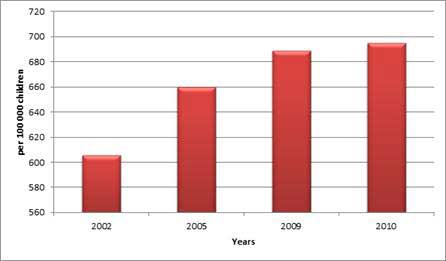
Figure 5 Cardiovascular disease in children of Belarus
The frequency of congenital heart malformations has also increased. Estimates vary between 0.8 and 1.2 % of all new born babies, constituting 30 % of all birth defects observed. Congenital heart malformations represent a large and heterogeneous group that includes relatively minor forms to serious conditions incompatible with life.
Paediatric cardiologists are very concerned about problems of heart arrhythmia (abnormal irregular heartbeat) and electrical conduction, both of which are increasing. Arrhythmia has a tendency to become chronic and increases the risk of sudden death. Children in apparent “good health” can also experience certain problems of arrhythmia and conductivity. Between 2004 and 2011, children with cardiovascular disease have more than doubled, mainly due to increases in congenital heart malformations and heart arrhythmias.
Public health specialists working in the areas contaminated by the accident note that diseases of the eye and related visual apparatus has more than tripled in children.
Bandajevsky called on government authorities to take concrete action to stem the rapidly deteriorating health of children in contaminated areas, and for the concerted efforts of radioprotection experts to give practical advice and scientists to develop and introduce prophylactic measures and treatment. This cannot happen until governments and the regulatory authorities stop suppressing and concealing information on the health impacts of ionising radiation in general and of nuclear accidents like Chernobyl and Fukushima in particular.
The health impacts of the Fukushima disaster are already emerging, thanks to the concerted efforts of Japanese doctors, scientists and citizens in the face of government disinformation (see [16] Truth about Fukushima, SiS 55).
Meanwhile new research is exposing how the health impacts of ionizing radiation has been greatly underestimated by the conventional model used by IAEA, UNSCEAR and the ICRP (International ) (see [17] Bystander Effects Multiply Dose & Harm from Ionizing Radiation, SiS 55); and more importantly, which treatments and prophylactic measures may be effective.
Article first published 24/05/12
Comments are now closed for this article
There are 4 comments on this article.
Todd Millions Comment left 25th May 2012 16:04:55
A brave report-Can data sets be seperated from the earlier' proto-chernobaly',fire at windsgate?Also the model for the ministry of truth stategy.
The Japanese are most persistant.The burning of contaminated debri has given us in western Canada a secound dose of officially harmless radiation.I can't think of how too properly express my thanx.But Tosibia and others were already on my embargo list over the nuc program and I should probably-extend it.
During the sequel to the great war,one of the reasons the nipponese army med corps was so busy killing prisioners with various plaugue pathogens(we are NOT in a stone casting position-see:Grosse Isle,Suffield.),was the observation that the balloon drone 'FUNGUE' program was a dead loss when armed with incenderies due to the most reliable winds being in the winter months,when the target wasn't particulary flamable.I'm less than pleased,how good their meteorlogical observations have proven too be-TWICE.
Is confirmation of slightly enriched uranium weapons have being used in Iraq abailable yet?This could queer the case on fall out studies as it smears and bioaccumulates.
chemfood Comment left 31st May 2012 15:03:27
thank you. Sharing at Reality Check Radiation Exposure and Protection Forum
http://realitycheck.no-ip.info/forum/index.php/topic,152.msg368.html#msg368
and at Nuclear News Now
http://realitycheck.no-ip.info/nnn.html
Judith Kelman Comment left 6th June 2012 19:07:20
Thank you!
George Robinson Comment left 9th October 2013 18:06:04
Thank you for this article. After fukushima and radiation counts started rising in Paris and Oxfordshire I looked into setting up a metering station & bought a reference field-dosimeter from Fluke. Tried calibrating it and found anomalies in their software but they refused to reveal how their internal electronics could produce a background reading, complete with stochastic sounding "tick", even when all three scintillation chambers were disconnected. To my shame I gave up at that point, but not before reading Chris Busby and about his Low Level Radiation Campaign, which in turn lead to the Yablokov paper you reference.
Where on so many fronts he seems right on the money, it is inexplicable that the widely read author of the Gaia hypothesis, James Lovelock, can be so blindly pro-nuclear?! He repeats claims that less than a dozen nuclear deaths have ever occurred. How can such a sensible scientist hold such a view?